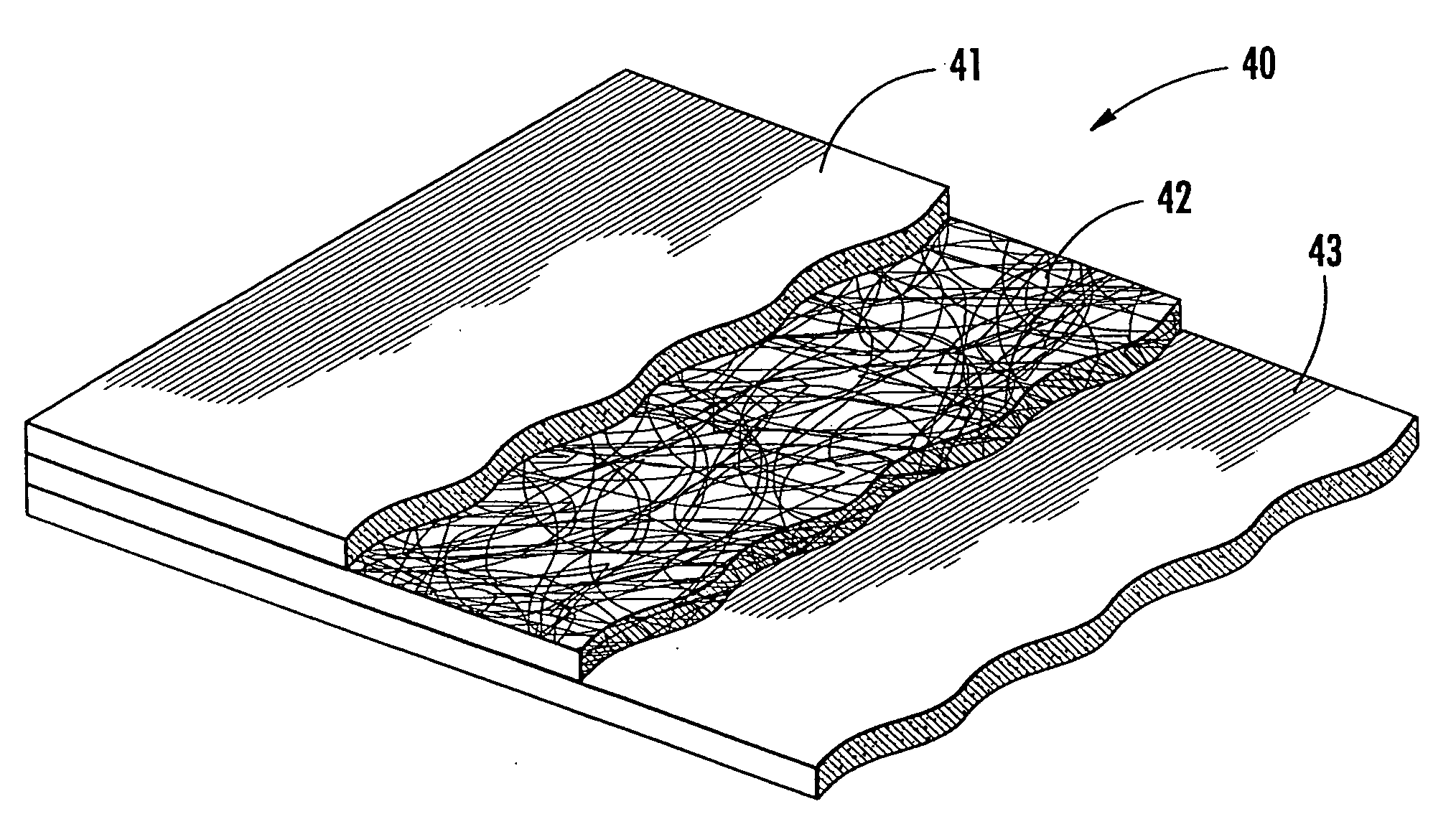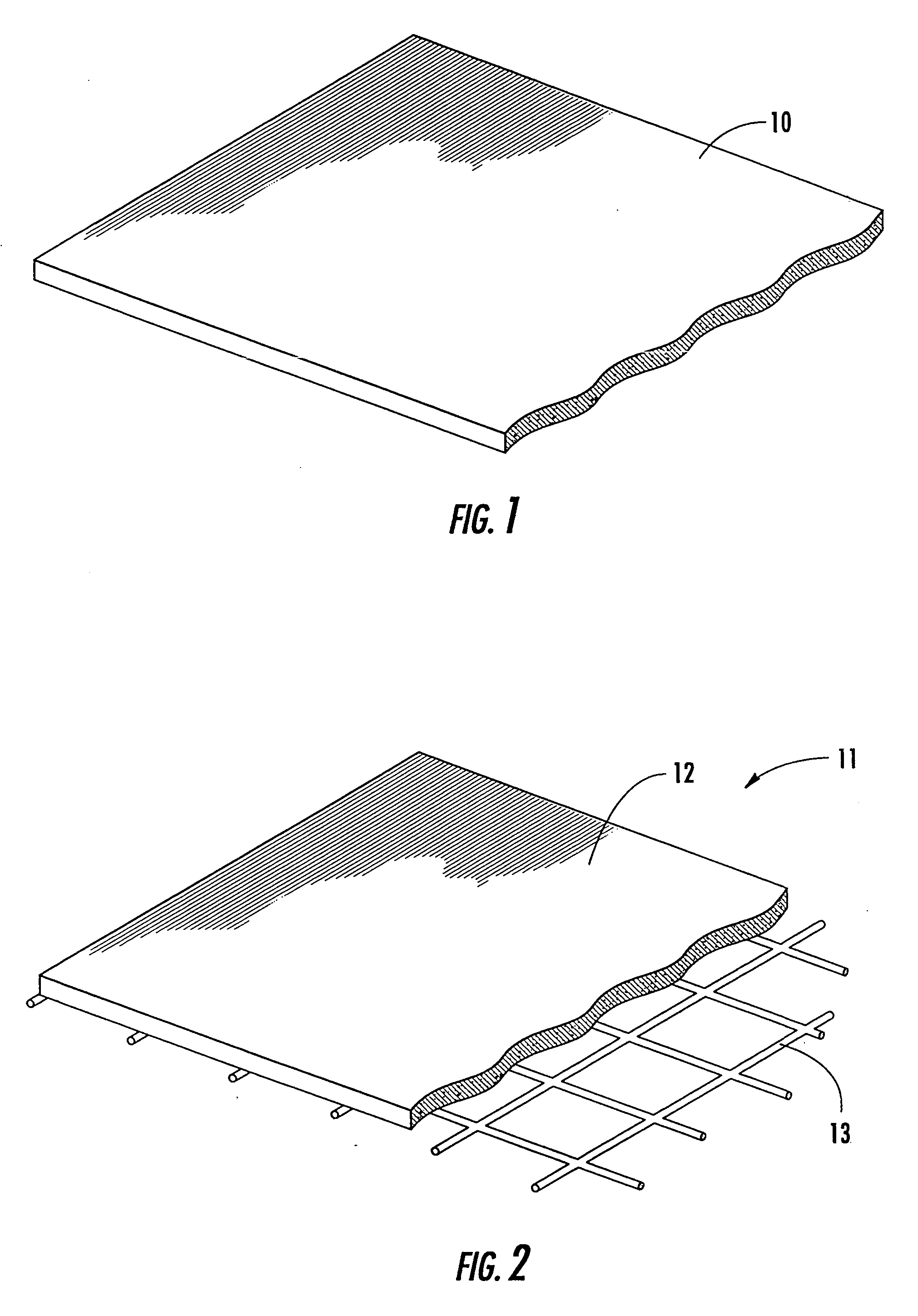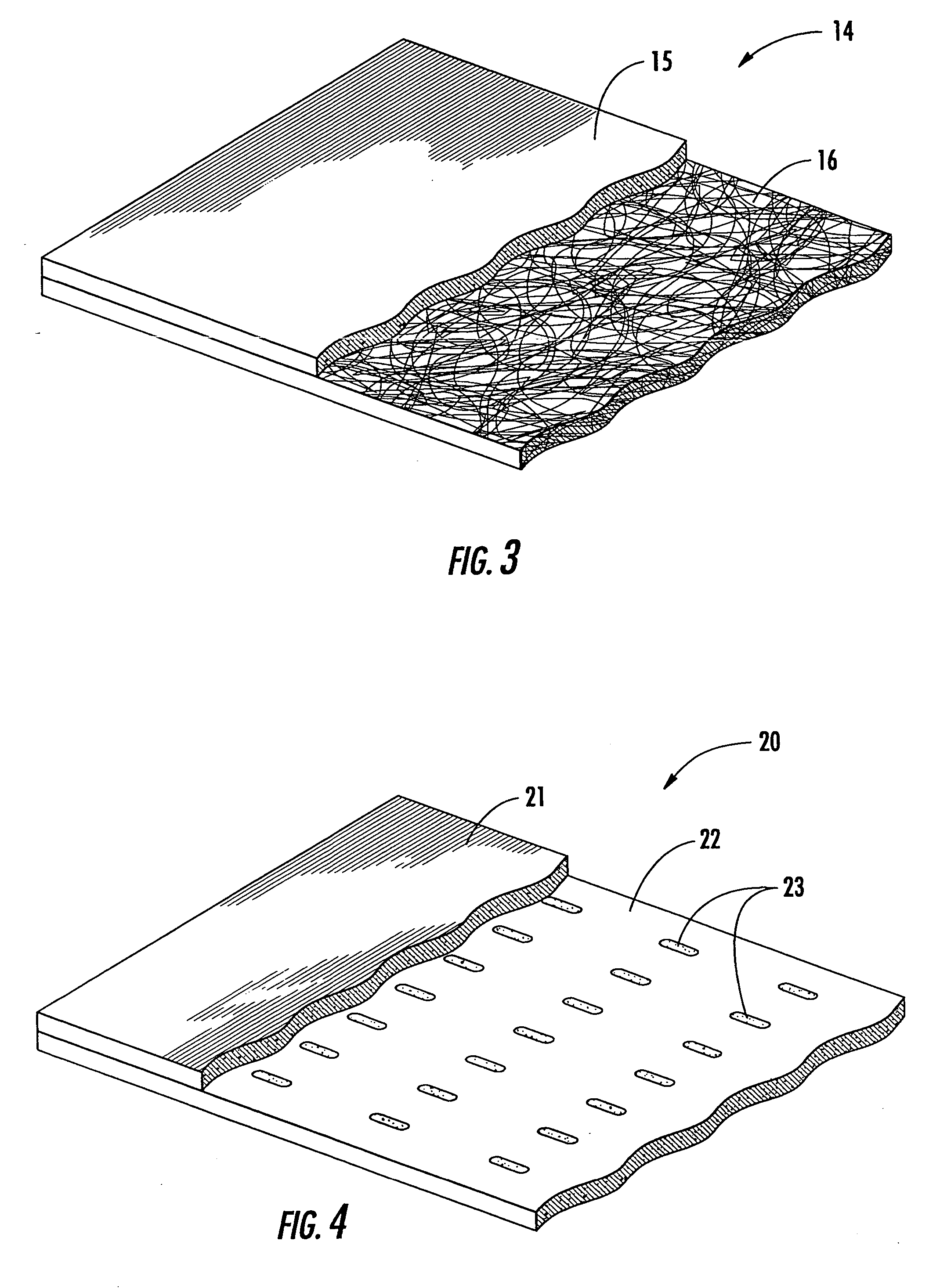Garments preventing transmission of human body odor
a technology for preventing transmission and clothing, applied in the field of clothing, can solve the problems of high cost of complex structures, easy saturation to liquid exposure and durability of adhered carbon, and uncomfortable protection clothing made of such barrier materials, and achieve the effect of high-performance membran
- Summary
- Abstract
- Description
- Claims
- Application Information
AI Technical Summary
Benefits of technology
Problems solved by technology
Method used
Image
Examples
example 1
[0035] A microporous, activated carbon filled membrane is formed generally according to the process as described by Jacoby U.S. Pat. No. 5,594,070 wherein a film of thickness greater than 0.005 mm and less than 2 mm, and more preferably 0.01 mm to 1.0 mm is formed from the following composition on a cast-film extrusion line at a temperature between 180° C. and 275° C. The composition includes 100 parts by weight of polymeric resin, 40-90 parts by weight of which is an ethylene-propylene block copolymer having an ethylene content of 30-45% (available from Himont), 5-40 parts by weight of which is polypropylene homopolymer with a melt flow rate of 1-30 dg / min per ASTM D1238 (available from Amoco Chemical Company), 1-10 parts by weight of which is a low molecular weight polypropylene having a melt viscosity of 70-500 poise (available from Polyvisions Inc.). The composition additionally includes 0.5-10 ppm of red quinacridone dye beta-spherulite nucleating agent and 5-30 parts by weight...
example 2
[0038] A microporous, activated carbon filled membrane is formed according to Example 1 with the addition of 100-2000 ppm of an antimicrobial additive such as 2,4,4′-trichloro-2′-hydoxydiphenyl ether (example of which is available as Microban® from Clinitex Corp.).
example 3
[0039] Similar examples of microporous, activated carbon filled membranes can be formed generally according to the process described by Weimer et al. U.S. Pat. No. 5,690,949 with the addition of activated carbon. The polymeric composition includes a processing compound such as a hydrocarbon liquid (i.e., mineral oil) that will dissolve in the polymer resin matrix and phase separate upon cooling and a fluorochemical additive to improve water and oil repellency. Here, the stretched film is annealed at between 100° C. and 150° C. after stretching. In this case, the activated carbon is suspended in the hydrocarbon liquid processing agent during compounding, mixing, and extrusion (i.e., either cast or blown film) and remains in the micropores after stretching thus imparting adsorptive characteristics to the final film or membrane.
PUM
| Property | Measurement | Unit |
|---|---|---|
| mean particle diameter | aaaaa | aaaaa |
| diameter | aaaaa | aaaaa |
| diameter | aaaaa | aaaaa |
Abstract
Description
Claims
Application Information
 Login to View More
Login to View More - R&D
- Intellectual Property
- Life Sciences
- Materials
- Tech Scout
- Unparalleled Data Quality
- Higher Quality Content
- 60% Fewer Hallucinations
Browse by: Latest US Patents, China's latest patents, Technical Efficacy Thesaurus, Application Domain, Technology Topic, Popular Technical Reports.
© 2025 PatSnap. All rights reserved.Legal|Privacy policy|Modern Slavery Act Transparency Statement|Sitemap|About US| Contact US: help@patsnap.com



